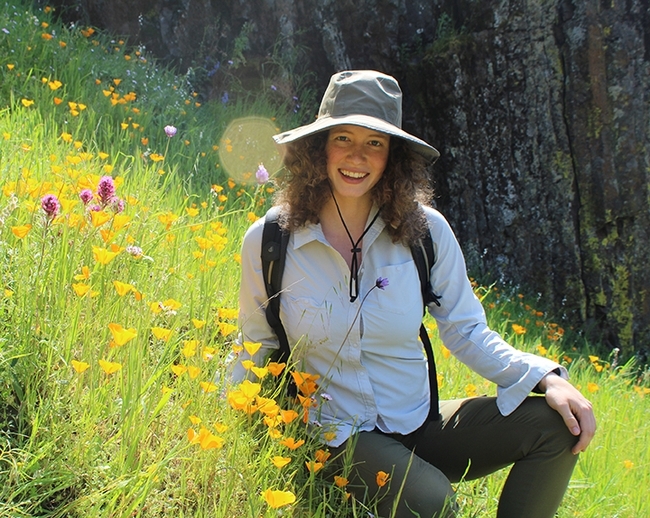
The open-to-the-public competition involved searching for the first-of-the-year bumble bee in the two-county area of Yolo or Solano; photographing it; and emailing the image to the Bohart Museum at bmuseum@ucdavis.edu.
The first bumble bee to emerge in this area is usually the black-tailed bumble bee, Bombus melanopygus, but another bumble bee, the yellow-faced bumble bee, Bombus vosnesenskii,is out early as well.
Both are considered "spring bees" because that is when their population is the highest, according to Thorp. Then their numbers "tail" the rest of the year.
Lynn Kimsey, director of the Bohart and a UC Davis distinguished professor, Department of Entomology and Nematology, announced Saturday that "we have the winners."
Not one winner, but two. No one species, but two.
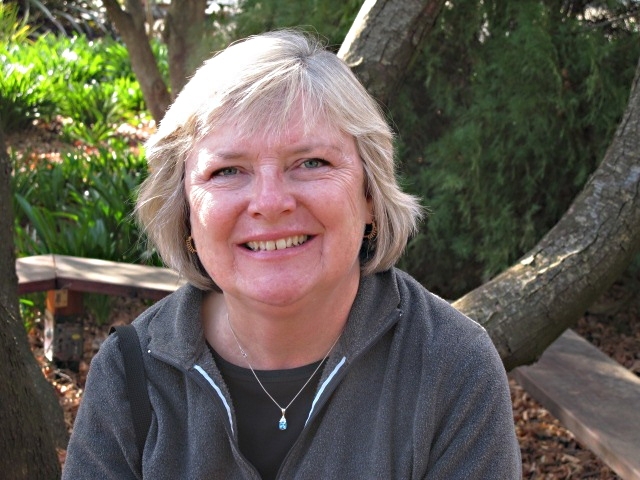
Coincidentally, they each took their photos at exactly 2:30 p.m., Jan. 1 in the 100-acre UC Davis Arboretum and Public Garden as the bees foraged on manzanita.
And fittingly, they both knew and worked with Robbin Thorp (1933-2019), a global authority on bees and a UC Davis distinguished emeritus professor of entomology.
The event also marked the second consecutive year that a member of the Williams lab won. Last year postdoctoral researcher Charlie Casey Nicholson of the Williams lab and the lab of Elina Lastro Niño, claimed the prize by photographing a B. melanopygus at 3:10 p.m., Jan. 14 in a manzanita patch in the Arboretum.
As the 2022 winners, Page and Zagory will each receive a coffee cup designed with the endangered Franklin's bumble bee, a bee that Thorp closely monitored in its small range at the California-Oregon border. The cup features the image of the bee specimen, photographed by Bohart scientist Brennen Dyer, and designed by UC Davis doctoral alumnus Fran Keller, professor at Folsom Lake College.
The television program, Good Day Sacramento, featured the contest on Jan. 3. (See it here.)
Worldwide Collection. The Bohart Museum houses a worldwide collection of 8 million insect specimens, including 112 species of bumble bees, Kimsey said. Thorp spend much of his time at the Bohart where he identified bees and helped colleagues with their research.
Thorp, a 30-year member of the UC Davis faculty, retired in 1994 but continued his work on bees until his death at age 85 at his home in Davis. Known as a tireless advocate of pollinator species protection and conservation, he co-authored two books in 2014: Bumble Bees of North America: An Identification Guide (Princeton University) and California Bees and Blooms: A Guide for Gardeners and Naturalists (Heyday).
Said Zagory: “I indeed knew Robbin Thorp, one of the most generous and kind people I have ever met. Dr. Thorp invited me to do a page for their book (California Bees And Blooms: A Guide for Gardeners and Naturalists) about the UC Davis Arboretum All-Stars (pages 230 -232) and he edited a publication we created at the UC Davis Arboretum called Ten Bees and Ten Plants they Love that can be downloaded from the website at https://arboretum.ucdavis.edu/pollinator-gardening.
Page is a 2018 alumnus of The Bee Course, which Thorp co-taught from 2002-2018. The nine-day intensive workshop, geared for conservation biologists and pollination ecologists and considered the world's premiere native bee biology and taxonomic course, takes place annually in Portal, Ariz. at the Southwestern Research Station, part of the American Museum of Natural History, N.Y. (The 2021 winner--Charlie Casey Nicholson--is a 2015 alumnus of The Bee Course.)
Page said she was “also lucky enough to participate in a "Bumble Bee Blitz" organized by Thorp and the U. S. Fish and Wildlife Service in July 2016 on Mt. Ashland, where we searched for Bombus franklini and Bombus occidentalis-- two very rare West Coast bee species. We unfortunately did not find Bombus franklini, which is now recognized as an endangered species under the Endangered Species Act.”
Brilliant Scientist. “Robbin was a brilliant scientist and a dedicated advocate for bumble bee conservation,” Page said. “His death was a great loss and I wish more of my career could have overlapped with his time in Davis.”
As a doctoral candidate in entomology, Page researches and investigates “whether European honey bees compete with native bees for floral resources and how we can use well-planned floral enhancements to mitigate negative effects of competition."
How rare is it find Bombus vosnesenskii on Jan. 1?
In an email today, UC Davis doctoral alumnus and Thorp protégé Kim Chacon, said she has seen B. vosnesenskii near San Luis Obispo since Dec 26. She is a lecturer at California Polytechnic University (Cal Poly). "I think it is a very opportunistic species. In my research, that was one of the first emergers, the 6th genus actually. Robbin Thorp had an interesting theory about bumble bees dealing with a virus or other illness which was shifting the dominant species to vosnesenskii. I'm so happy both Ellen and Maureen won-- they are both awesome!"
"My congratulations, too," said bumble bee enthusiast/photographer Allan Jones of Davis, a friend of Thorp's. "I did not even go out considering the chilly weather. I expected it to be on the second day when we got up into the sixties, and with the ground so damp and cold, too. Hats off, brrrr."
Both bumble bee species have also been sighted and photographed in recent years on Dec. 31 and Jan. 1 in Benicia, Solano County.
Attached Images:
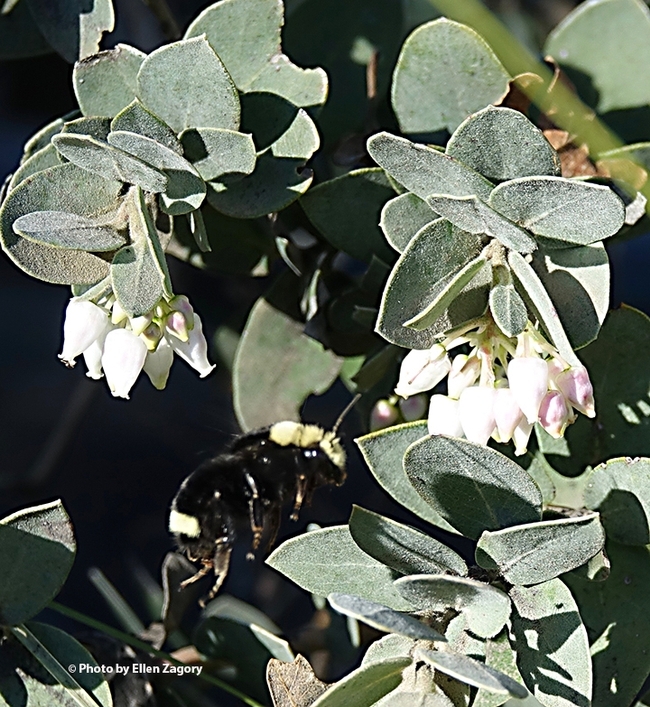
This is the image of Bombus vosnesenskii that Ellen Zagory captured in the UC Davis Arboretum and Public Garden.
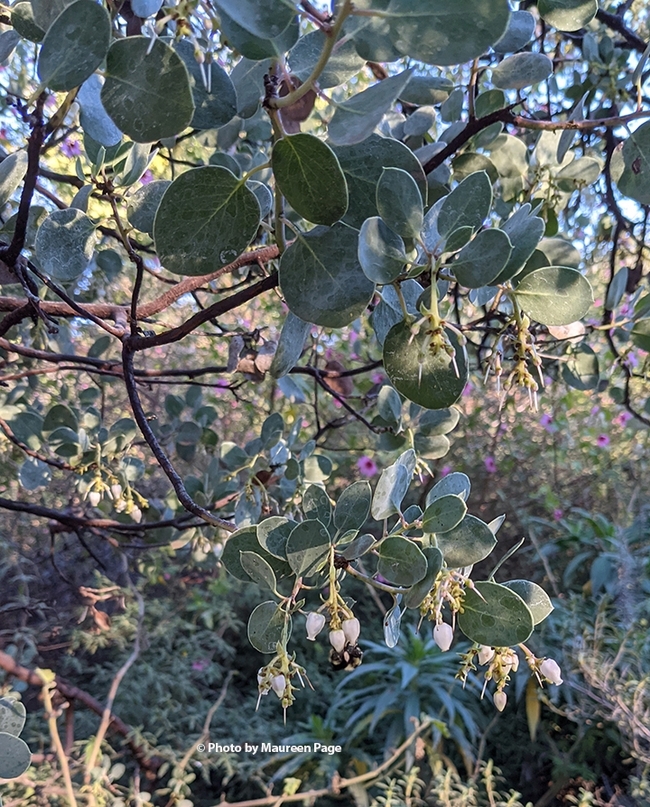
This is the cell phone image of Bombus melanopygus that Maureen Page took in the UC Davis Arboretum and Public Garden.
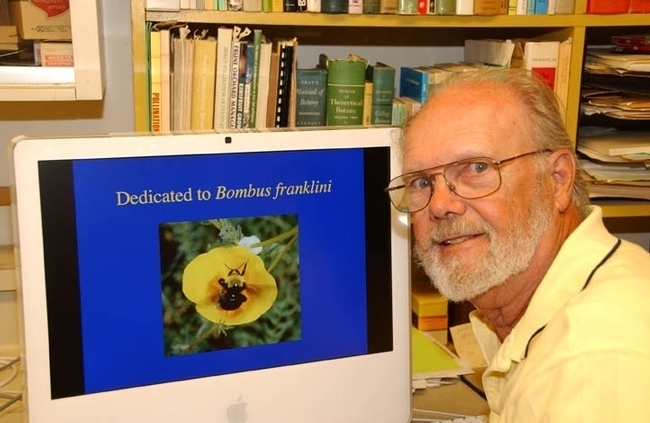
The late UC Davis professor, Robbin Thorp, shown here with an image he took of the endangered Franklin's bumble bee, always looked forward to finding the first bumble bee of the year.